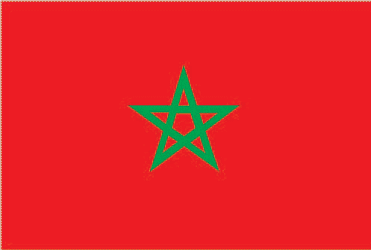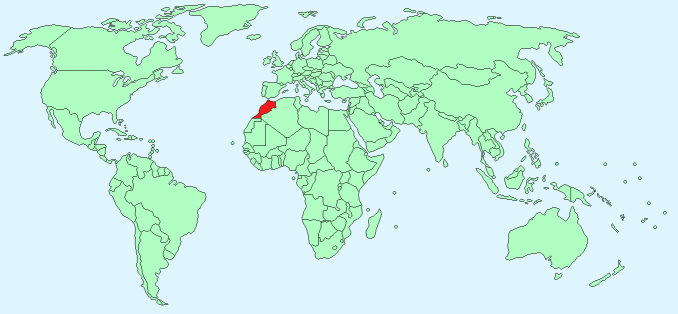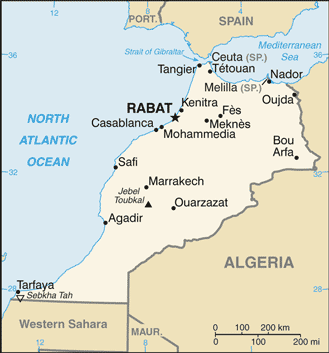Morocco


Continent – Africa
Region – Northern Africa
Size – 446,550 km²
Geography – mountains and plateau, coastal plain
Language – Arabic, French, Berber
Religion – Muslim 99%, 1% other
Monetary Unit – Moroccan dirham
Natural Resources – phosphates, iron ore, manganese, lead, zinc, fish, salt
Agriculture – barley, wheat, citrus fruits, grapes, vegetables, olives; livestock; wine
Industry – automotive parts, phosphate mining and processing, aerospace, food processing, leather goods, textiles, construction, energy, tourism

Neighbouring Countries – Algeria, Western Sahara
Population – 32,987,206 (2014)
Population Growth Rate – 1.02%
Average Life Expectancy – 76.51
Capital City – Rabat (population 1,932,000)
Largest City – Casablanca (population 3,491,000)
Highest Mountain – Jebel Toubkal (4,165 m)
Longest River – Draa (1,100 km)
Climate – Coastal – Mediterranean – mild winters 6°C to 18°C and hot, dry summers 18°C to 36°C – Inland – hot summers 22° C to 50°C, mild winters 8°C to 22°C
Yearly Rainfall – Coastal region 20 cm approx, inland minimal
Plant Life – cork, cedar, juniper, pines, walnut, poplar, almond, palms, scrubland
Animal Life – foxes, jackals, genets, hyenas, panthers, gazelles, Barbary ape, horses, camels, sheep, goats
Bird Life – ostrich, swans, geese, ducks, pheasant, partridge, grebes, albatross, petrels, gannets, boobies, cormorants, pelicans, herons, bitterns, darters, stork, ibis, flamingo, kites, hawks, bustard, gulls, terns, parrot
Harvard Reference for this page:
Heather Y Wheeler. (2015). Morocco. Available: https://www.naturalhistoryonthenet.com/Facts_Figures/Country_Facts/morocco.htm. Last accessed Tuesday, July 19, 2016
Facts and Figures Pages
